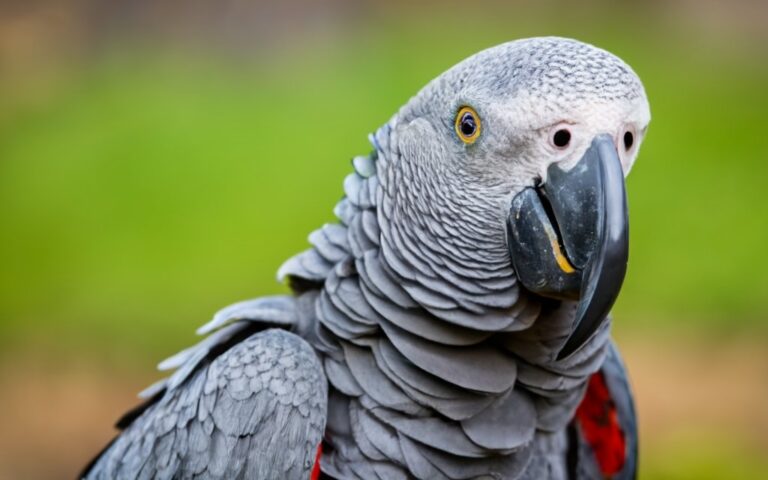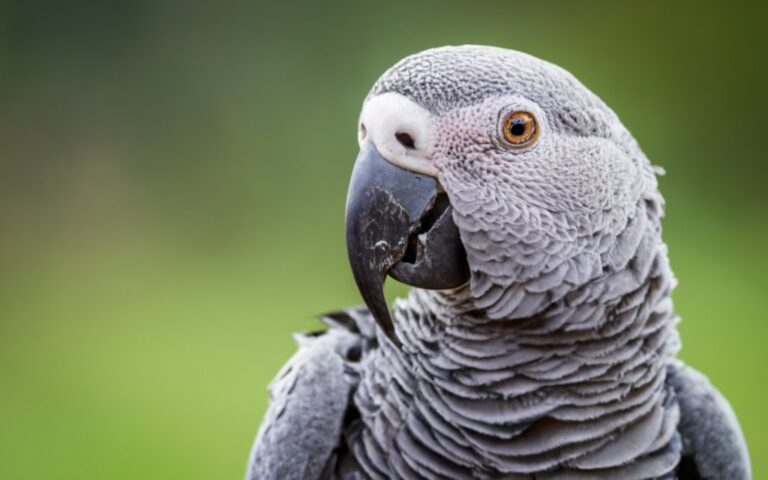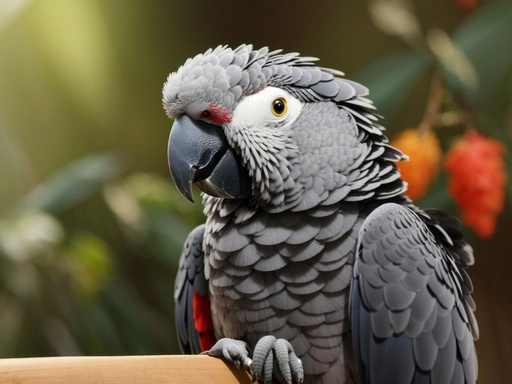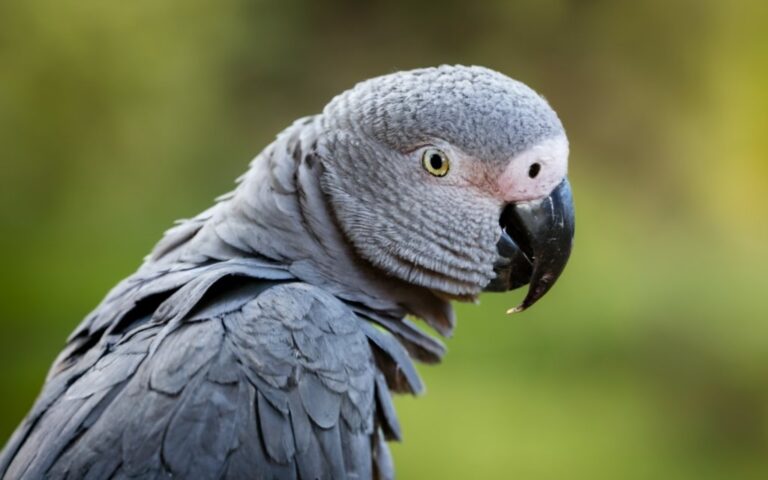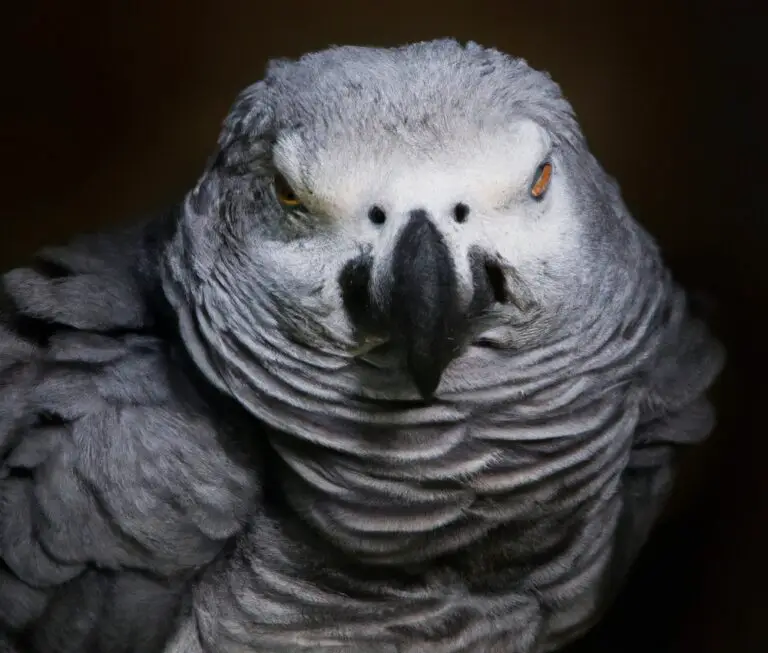How Do African Grey Parrots Bond With Their Human Owners?
Key Takeaways:
- African Grey Parrots have the ability to form strong emotional bonds with their human owners.
- Social interaction and positive reinforcement play a crucial role in building a strong bond between African Grey Parrots and their human owners.
- African Grey Parrots require consistent interaction and attention to maintain a healthy bond with their human owners.
- Trust and respect are essential for a successful and long-lasting relationship between African Grey Parrots and their human owners.
Have you ever wondered how African Grey Parrots form such strong bonds with their human owners? These magnificent birds are known for their intelligence and ability to mimic human speech, but their capacity for forming deep emotional connections goes beyond that.
From establishing trust to providing a stimulating environment, there are many factors that contribute to a strong bond between African Grey Parrots and their human companions.
Join me as we delve into the fascinating world of these incredible birds and explore the secrets behind their unique and special relationships with humans.
| Aspect | Description |
| Bonding Process | African Grey Parrots bond with their human owners through regular interaction, trust-building activities, and positive reinforcement. |
| Time Commitment | Bonding with an African Grey Parrot requires considerable time and dedication. Owners must spend several hours each day engaging with their parrot, training it, and providing mental stimulation. |
| Verbal Interaction | African Grey Parrots can develop strong bonds by talking and mimicking human speech. Engaging in conversations and using positive reinforcement help strengthen the bond. |
| Physical Interaction | Regular physical contact, such as gentle petting and cuddling, helps foster a bond between African Grey Parrots and their human owners. It is crucial to respect the bird’s body language and preferences. |
| Routine and Consistency | Establishing a consistent routine and providing a stable environment build trust and comfort. Parrots thrive on predictability and appreciate a structured daily routine. |
| Positive Reinforcement | Rewarding desired behaviors with treats, praise, and attention reinforces the bond between African Grey Parrots and their owners. Positive reinforcement encourages social interaction and helps strengthen desired habits. |
| Training and Enrichment | Training sessions and interactive toys provide mental stimulation and strengthen the bond. Teaching tricks, playing games, and solving puzzles can help establish a deeper connection. |
Understanding the African Grey Parrot
The African Grey Parrot is a fascinating and highly intelligent bird species known for its ability to mimic human speech and form strong bonds with its human owners.
Physical and Behavioral Characteristics of African Grey Parrots
African Grey Parrots are known for their distinctive physical and behavioral characteristics. They have a medium-sized body with a grey plumage and a short, sturdy tail.
Their most distinguishing feature is their bright red tail feathers.
African Grey Parrots have a strong beak that they use to crack open nuts and seeds, and their feet are well-adapted for climbing and gripping. In terms of behavior, African Grey Parrots are highly intelligent and socially inclined.
They have the ability to mimic and imitate human speech, making them popular as pet birds.
They are also known for their playful nature and enjoy engaging in activities such as puzzles and interactive toys. African Grey Parrots are highly observant and have a tendency to bond closely with their human owners, often forming deep emotional connections.
However, they can also be cautious and wary of strangers, requiring patience and trust-building to establish a strong bond.
Overall, African Grey Parrots are fascinating and unique creatures with a range of physical and behavioral traits that make them a beloved companion for many bird enthusiasts.
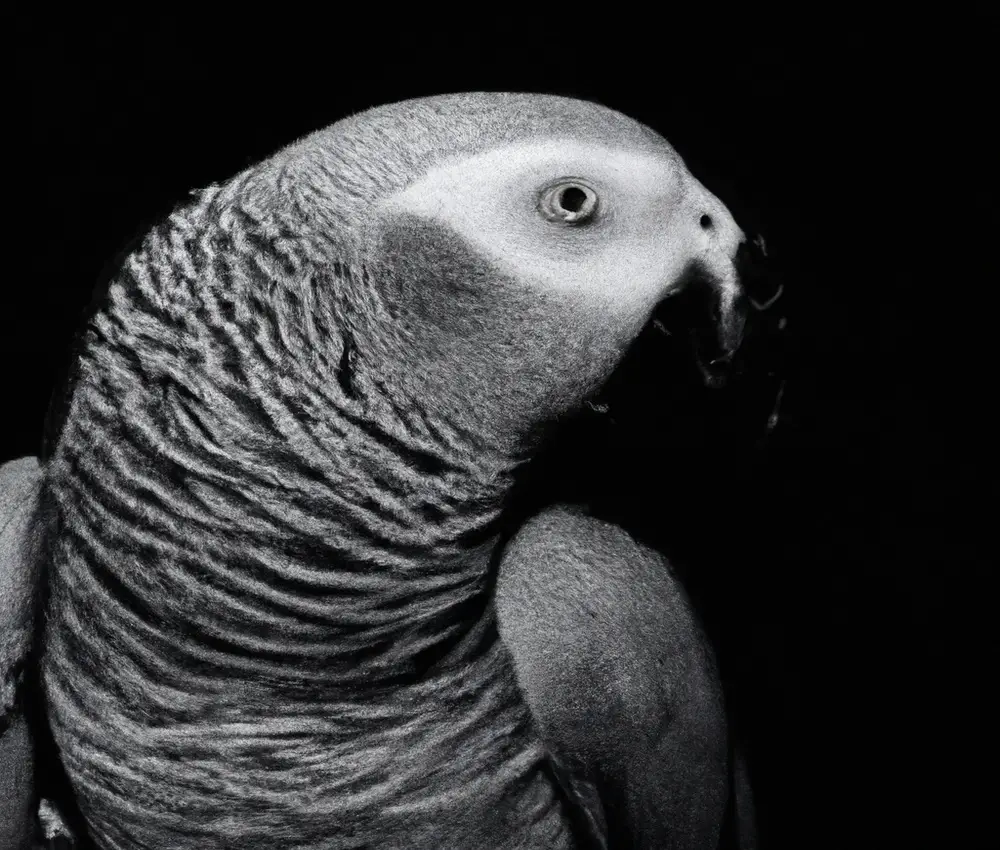
Lifespan and Diet of African Grey Parrots
African Grey Parrots have an average lifespan of 40 to 60 years, although some have been known to live up to 80 years. They require a balanced diet consisting of fresh fruits, vegetables, high-quality pellets, and a limited amount of nuts and seeds.
It is important to avoid feeding them foods that are toxic to birds, such as avocado and chocolate.
Providing a varied and nutritious diet is essential for their health and well-being.
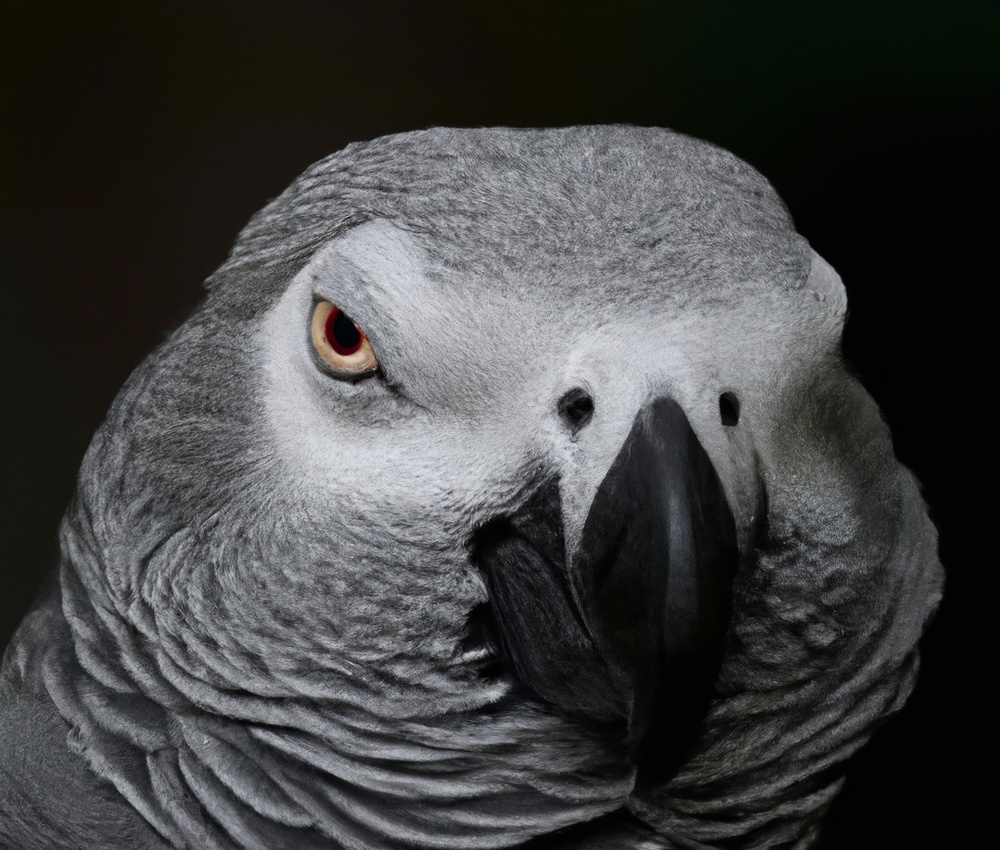
Intelligence and Communication Abilities of African Grey Parrots
African Grey Parrots are known for their remarkable intelligence and communication abilities. They have the cognitive capacity of a 5-year-old child, which allows them to learn a wide range of words, phrases, and even songs.
They can mimic human speech with incredible accuracy and understand the meaning behind the words.
African Grey Parrots can also use their vocalizations to express their emotions and needs. In addition to speech, they communicate through body language, using head movements, wing flapping, and various postures.
Their ability to understand and communicate makes them excellent companions and interactive pets.
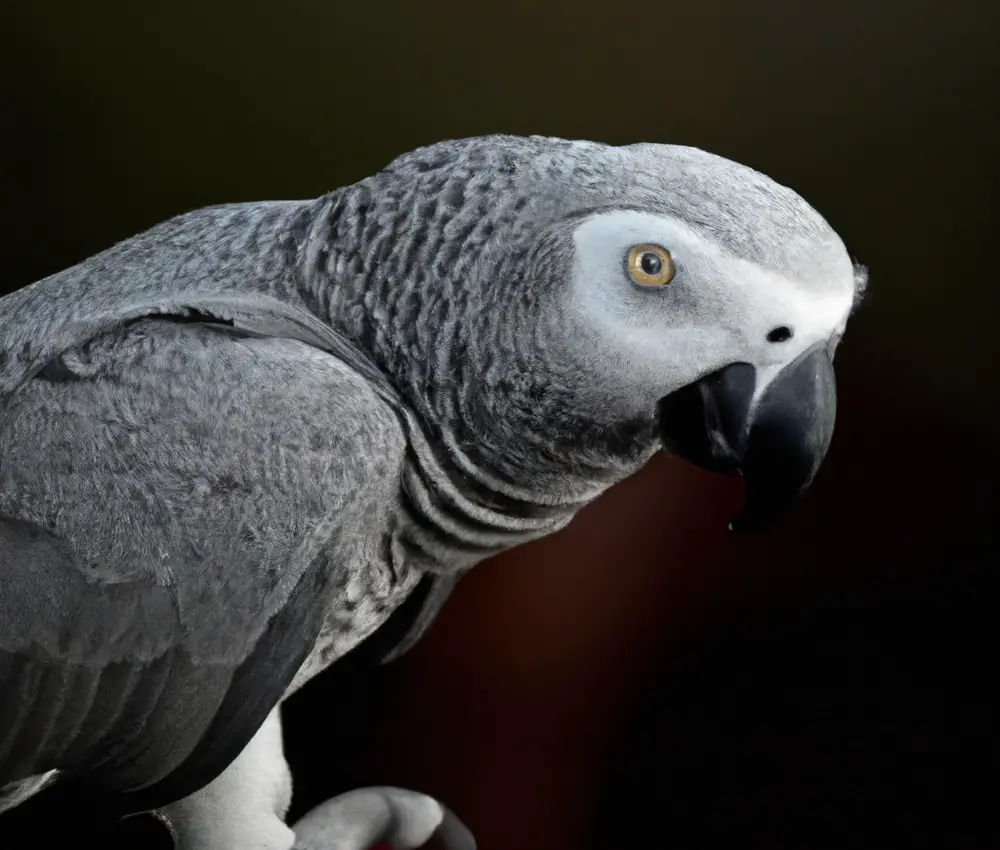
The Bonding Process between African Grey Parrots and Humans
Building a strong bond between African Grey Parrots and their human owners is a gradual and ongoing process.
Natural Social Behavior of African Grey Parrots
African Grey Parrots are highly social creatures that naturally live in flocks in the wild.
They form strong pair bonds with a mate and engage in cooperative behaviors such as preening and feeding each other.
They also communicate through complex vocalizations and body language.
Understanding these social behaviors is essential for bonding with African Grey Parrots and providing them with a stimulating and fulfilling environment.

The Importance of Bonding for African Grey Parrots and Humans
Bonding is essential for both African Grey Parrots and humans.
It creates a strong emotional connection, promotes trust and mutual understanding.
Through bonding, parrots feel secure and loved, leading to overall well-being.
Humans benefit from bonding by developing a deeper understanding of their parrot’s needs, behavior, and communication.
It fosters a lifelong companionship and enriches both parties’ lives.

Establishing Trust with an African Grey Parrot
Establishing trust with an African Grey Parrot is essential for a strong bond. Spend quality time together, respecting their personal space and boundaries.
Use positive reinforcement and rewards when they exhibit desired behavior.
Communicate calmly and consistently, and be patient as trust takes time to build.
Providing a Stimulating Environment for Bonding
To provide a stimulating environment for bonding with your African Grey Parrot, offer a variety of toys and activities.
This could include puzzle toys, foraging opportunities, and interactive toys that encourage play and mental stimulation.
Spend quality time engaging with your parrot through training, playtime, and daily care activities.
Additionally, create a comfortable and secure space for your parrot with ample opportunities for social interaction and exploration.
By providing a stimulating environment, you can strengthen the bond between you and your African Grey Parrot.
Communication Methods for African Grey Parrots and Humans
African Grey Parrots and humans communicate through vocalizations, body language, and positive reinforcement.
Vocalizations and Mimicry in African Grey Parrots
African Grey Parrots are known for their exceptional vocal abilities.
They have a wide range of vocalizations, including whistles, squawks, screeches, and even human-like speech.
They can mimic various sounds and voices, including the sounds of household objects, other animals, and even human speech.
Mimicry is a natural behavior for African Grey Parrots, as they learn by imitating the sounds they hear in their environment.
They have the ability to mimic both the pitch and the tone of the sounds they hear, which allows them to imitate speech with remarkable accuracy.
African Grey Parrots can develop an extensive vocabulary, sometimes reaching hundreds of words and phrases.
They can not only mimic words but also understand their meaning and use them appropriately in context.
This makes them excellent companions and even conversation partners.
It’s important to note that not all African Grey Parrots will develop speech abilities to the same extent.
While some individuals may become proficient talkers, others may have a more limited vocabulary or prefer to communicate through other means, such as body language or specific vocalizations.
To encourage vocalizations and mimicry in African Grey Parrots, it’s important to provide them with a stimulating and social environment.
Regular interaction, talking to them, and exposing them to a variety of sounds can help stimulate their vocal development.
Positive reinforcement, such as praise or treats, can also be used to encourage them to imitate and articulate certain sounds or words.
Remember, each African Grey Parrot is unique, and they may have different vocal preferences and abilities.
Patience, consistency, and a supportive environment are key when it comes to encouraging vocalizations and mimicry in African Grey Parrots.
Interpreting Body Language of African Grey Parrots
Understanding the body language of African Grey Parrots is key to interpreting their feelings and intentions.
Some common signals to look for include pinned eyes, which indicate fear or discomfort, while dilated pupils indicate excitement or attentiveness.
Fluffed feathers and a lowered head may signal relaxation or contentment, while raised feathers and a raised head can indicate aggression or surprise.
Paying attention to their body posture, such as a hunched or puffed-up posture, can also give insights into their mood.
Additionally, vocalizations and tail movements can provide further clues about their emotions and needs.
By observing and familiarizing yourself with their body language, you can better understand and communicate with your African Grey Parrot.
The Role of Positive Reinforcement in Communication
Positive reinforcement plays a vital role in communication with African Grey Parrots.
When they exhibit desired behaviors, such as speaking or mimicking words, praising and rewarding them with treats or toys reinforces those behaviors.
This encourages them to continue communicating with us, strengthening the bond and promoting learning.
Activities to Strengthen the Bond with African Grey Parrots
Want to strengthen your bond with your African Grey Parrot? These activities will do the trick!
Playtime and Interactive Toys for African Grey Parrots
Playtime and interactive toys are important for African Grey Parrots to keep them mentally stimulated and physically active. Some suitable toys include puzzle toys, foraging toys, and interactive toys that require problem-solving skills.
It’s also important to engage in interactive play with your parrot, using toys like ropes, swings, and balls.
Regular playtime will help strengthen the bond between you and your African Grey Parrot.
Training and Teaching Tricks to African Grey Parrots
Training and teaching tricks to African Grey Parrots can be a fun and rewarding experience for both you and your parrot. Here are a few tips to get started:
- Start with basic commands: Begin by teaching your parrot simple commands like “step up” and “down.” Use positive reinforcement, such as treats or praise, to reward your parrot for following the command.
- Use a clicker: Clicker training is a popular method for teaching tricks to parrots. Pair a distinct clicking sound with a treat to mark the desired behavior. This helps your parrot understand what you want them to do.
- Break down complex tricks: If you want to teach your African Grey Parrot a more complex trick, break it down into smaller steps. Teach each step individually and gradually combine them as your parrot becomes more proficient.
- Be patient and consistent: Training takes time and consistency. Practice short training sessions daily, and be patient with your parrot as they learn. Avoid getting frustrated and always end the training session on a positive note.
- Keep it fun: Make training sessions enjoyable for your parrot by incorporating their favorite toys or treats. This will keep them engaged and motivated to learn.
Remember, every parrot is unique, so go at their pace and adjust your training methods accordingly. With time, patience, and positive reinforcement, you can teach your African Grey Parrot a variety of tricks and strengthen your bond along the way.
Participating in Daily Care and Routine Activities
Participating in daily care and routine activities with your African Grey Parrot is essential for strengthening your bond.
This includes feeding them a balanced diet, providing fresh water, and maintaining a clean living environment.
Additionally, spending quality time together, such as grooming, playing, and talking to your parrot, will help build trust and companionship.
Challenges in Bonding with African Grey Parrots and How to Overcome Them
Bonding with African Grey Parrots can be challenging, but it’s important to establish trust, provide companionship, and allow for gradual socialization to overcome these obstacles.
The Potential for Aggression in African Grey Parrots
African Grey Parrots have the potential to display aggressive behaviors, especially during hormonal periods or when they feel threatened. This can include biting, screaming, lunging, or feather plucking.
Providing a stable and enriching environment, proper training, and positive reinforcement can help minimize aggression.
Consulting with an avian behaviorist is also recommended for addressing any aggressive behaviors.
Separation Anxiety and Loneliness in African Grey Parrots
Separation anxiety and loneliness can be common issues for African Grey Parrots. These intelligent and social birds thrive on companionship and interaction.
Being left alone for long periods of time can cause them to become anxious, stressed, and even exhibit behavioral problems.
To address separation anxiety and loneliness in African Grey Parrots, it’s important to provide them with a stimulating environment and enriching activities. This can include providing interactive toys, engaging in regular playtime, and participating in their daily care and routine activities.
Establishing a consistent routine can also help alleviate anxiety.
Birds thrive on predictability, so try to maintain a regular schedule for feeding, playtime, and social interaction. If you need to leave your African Grey Parrot alone for extended periods, consider getting them a companion.
African Grey Parrots are social creatures and having another bird as a companion can greatly reduce their feelings of loneliness and anxiety.
Lastly, be patient and understanding. Building trust and a strong bond takes time.
Spend quality time with your African Grey Parrot, communicate with them through vocalizations and body language, and provide positive reinforcement when they exhibit desired behaviors.
By addressing separation anxiety and loneliness in African Grey Parrots, you can create a happier and healthier bond with your feathered friend.
Resolving Trust Issues and Establishing a Positive Relationship
To resolve trust issues and establish a positive relationship with your African Grey Parrot, consistency is key. Spend quality time with your parrot every day, engaging in activities like talking, training, and playing.
Be patient and give your parrot space when needed.
Use positive reinforcement and reward good behavior to build trust. Avoid aggressive or intimidating actions and create a calm and stimulating environment.
With time and effort, your bond will strengthen and trust will develop.
Frequently Asked Questions about Bonding with African Grey Parrots
How long does it take for an African Grey Parrot to bond with its owner?
The time it takes for an African Grey Parrot to bond with its owner can vary. Some parrots may bond quickly, while others may take months or even longer.
It depends on the bird’s individual personality, past experiences, and the effort put into building trust and positive interactions.
It’s important to be patient, consistent, and provide a loving and stimulating environment to foster a strong bond with your African Grey Parrot.
Can African Grey Parrots bond with more than one person?
Yes, African Grey Parrots have the ability to bond with more than one person.
They are highly social birds and can form strong relationships with multiple individuals.
However, it’s important to remember that each parrot is unique, and the level of bonding may vary.
Providing love, care, and positive interactions with all individuals can help strengthen the bond between the parrot and each person.
How can I prevent my African Grey Parrot from becoming overly dependent on me?
To prevent your African Grey Parrot from becoming overly dependent on you, it’s important to establish boundaries and encourage independence. Here are a few tips:
- Encourage socialization: Allow your parrot to interact with other people and birds to foster a broader social circle.
- Provide mental stimulation: Offer a variety of toys, puzzles, and activities to keep your parrot engaged and entertained.
- Avoid excessive physical contact: While it’s essential to show affection, limit constant handling to prevent overdependence.
- Maintain a consistent routine: Establish a daily schedule to help your parrot feel secure and confident.
- Offer opportunities for independent play: Allow your parrot to entertain themselves with toys, exploring their environment, and engaging in natural behaviors.
Remember, building a healthy balance of companionship and independence is key to preventing overdependence and promoting a well-rounded relationship with your African Grey Parrot.
Is it possible to bond with an older African Grey Parrot?
Yes, it is possible to bond with an older African Grey Parrot. While it may take more time and patience compared to bonding with a younger bird, older African Grey Parrots are still capable of forming strong relationships with their human owners.
Consistent care, trust-building, and positive reinforcement can help establish a bond with an older African Grey Parrot.
Final Verdict
African Grey Parrots are highly intelligent and social creatures that can form strong bonds with their human owners. Through understanding their physical and behavioral characteristics, providing a stimulating environment, and using effective communication methods, a deep and trusting relationship can be established.
While challenges may arise, with patience and consistency, these can be overcome.
The key is to prioritize the parrot’s well-being, provide love and care, and establish a foundation of trust. By doing so, the bond between African Grey Parrots and their human owners will flourish, bringing joy and companionship to both parties.



